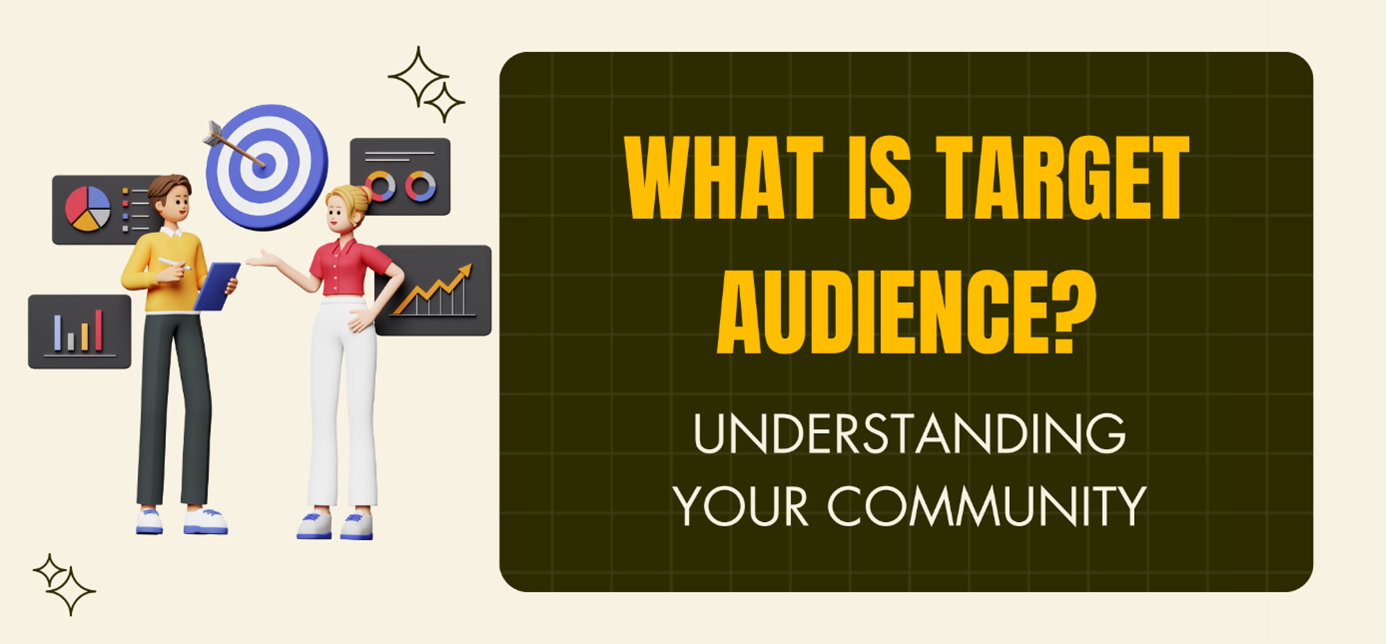Also, maybe they weren't clear about or didn't know their ideal customers. Comprehending one's target audience is essential for a successful marketing campaign because customers will feel connected with the business. You might be confused about finding your target audience and knowing how to build a strong connection with them. Wondering what is target audience? Keep reading to learn more and find your target audience!
A target audience is a specific group of customers with some behaviors and particular demographic characteristics. They're the pillar of many brands, and they influence the marketing strategy decision. Target audiences, at most times, determine where expenses for ads will be spent, the way to appeal to consumers, and the following items to be built.
A target audience is additionally useful for defining a brand's buyer persona. Buyer personas are representative overviews of the ideal consumer of a brand out of data comprising a particular audience. Among the demographics and behavior sectors, we have location, age range, gender, job titles, and income.
How to Discover One's Target Audiences
After wondering what is target audience, you will want to know how to find them. Follow the steps here to find your target audience;
1. Check Out Social Media Analytics
It is essential to know when one's followers are engaging highest with social media accounts. Do they interact very well whenever you post funny memes or make polls. When you are able to look into all these, you'll receive some clues about the content your specific target audience is interested in, thereby making it easier for you to discover your community.
All social media platforms have differences and broad audiences; therefore, going through your analytics on every platform is important. For example; Twitter has younger audiences, whereas Facebook has older ones which tend to interact more with the posts shared.
Then, Instagram is characterized by visuals; therefore, content with high visuals will excel there. When you know all these, you can start planning a marketing strategy well. Additionally, with analytics, you will know the people viewing your profile.
Also, you'll be informed on the content that is working and the content that isn't. When one posts content his target audience profile has a greater interest in, he will acquire followers in his target market.
2. Utilize Facebook Insights
In case you own a Facebook page, Facebook Insights stands as an excellent tool for you. This social media platform offers all pages many key insights free of charge. Their insights work just like Google Analytics, and you will get all the details you'll find helpful in creating personas.
One can view his visitors and their location when he accesses the 'People tab' on his Insights board. Facebook will show you the location demographics of your audience, even the primary location, and many other demographics based on age, gender, etc.
They also focus on areas like interest and integration alongside other platforms. Their insights will tell you the lifestyle of your audience, like if they're purchasing products online. Valuable insights such as these will aid one in campaign planning; therefore, you should try it out today.
When you buy the Facebook likes service of Views4You, you will boost the engagement rate on your posts greatly and enhance your marketing strategies. Their high-quality likes will give you a competitive advantage and boost sales for your product or service.
3. Make a Reader Persona For Targeting Blog
Making use of reader personas, you won't ever forget the person you are writing for. One's reader persona must be almost identical to his buyer persona due to the fact that his blog has to contain content that is useful for his readers.
An example is when marketers like reading a blog on digital media. Reader personas and buyer personas are different because readers mostly focus on challenges one's target personas may encounter.
4. Utilize Google Analytics for Learning More on Your Consumers
Google Analytics is ideal to obtain demographic information on your consumer behavior and the interests they have. Making use of Google Analytics, you can view a site's insights arranged in various categories like age, gender, location, etc.
All the categories are distinguished clearly, with colorful images for your interpretation. Google Analytics will give you keyword ideas and break down the numbers with graphs to offer users great visuals. It's a powerful tool that is ideal for target audience insights about the way your content fits in with their daily lives.
5. Find Out Your Website Performance
Start monitoring the best and worst content types on your site. One's website introduces his brand to lots of his target audience directly; therefore, focusing on whatever they are interested in remains an amazing means of attracting a higher audience.
When you look at the blog content and landing pages that captivate your current customers, you're free to start repurposing any content that is not performing well and then create content and run social ads for the one that's doing great.
An example is when your blog content or landing page on email marketing performed very well. Then, you can start sharing it on your social media channels to expand your reach.
6. Be Engaging with the Social Media Audience
Engaging with your social followers remains essential because they are your audience. Whenever you've created your buyer persona, they are the ones you'll be looking to. Even if you do not have an online account yet, do not forget to try it out when you own one later.
Inquire from your followers about what they like, then utilize communication channels such as Instagram Stories to get their responses. The engaged story can produce a positive or negative effect but you can still continue to attract a wide audience. You can also run ads on these social media channels and even radio stations to increase engagement rates and have new fans.
Difference Between Target Market and Audience
Audiences, together with target markets, are focused on trying to segment consumers into groups to bring about good business decisions. Then, a target market is different because it's a particular set of customers the product of a brand is aiming.
Intended population will define the group using audience demographics, interests, and purchase history. Basically, one can explain his target market by searching for his audience. If one's target market is 'adults aged 20-40', then his intended audience will be 'adults residing in California, USA aged 20-40'.
Types of Target Audiences
The type of target audience signifies additional means of defining who one is carrying out his marketing activities for. You're free to start segmenting them like fictional characters into groups or define them better by making use of categories like:
Purchase Intention
This means sets of individual consumers seeking a particular product or service and aiming to get additional information. An example is a consumer in the buying process of a new vehicle or clothing.
The data is important to ensure that one identifies consumers with some particular pain points and directs his message to the particular needs of his audience.
Interest
This means data on the things individuals are into, such as a hobby. Knowing this internal data will help you to create the right marketing plan, find your customer persona, and then aid in unearthing new customers' motivation.
Supposing you discover that a lot of potential customers are interested in educational content, such as college students, then you're free to decide the way to utilize the message during a marketing campaign to appeal to an ideal customer.
Subcultures
This means broad groups of individuals identifying with shareable experiences. You can reach a subculture by reasoning how it relates to your business, mainly when you've big potential audiences. An example is Netflix's market to its subculture.
That is, individuals watching a particular type of content make use of social media platforms directed to the subculture. Knowing and deciding on your whole audience will involve an amount of market research. It will include discovering the target consumers you're aiming to get to and knowing the right means to get there in order to build your brand's image.
Conclusion
You need to know your target audience in order for you to start building engaging customer base and giving great ideas on the way to kickstart your marketing efforts. If you have a business with multiple audience segments, you should distribute various forms of content fitting in with your business to your different target audiences.
When you target a specific audience, it'll aid your marketing campaign in reaching the right customer base that will relate well with your company's message. Ensure you comprehend the difference between the intended audience and the target market. This guide on what is target audience will help marketing managers a lot.






